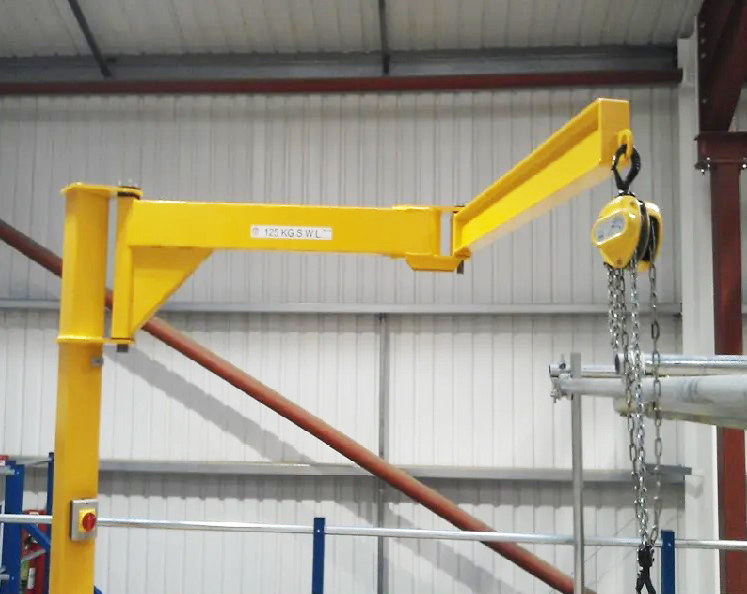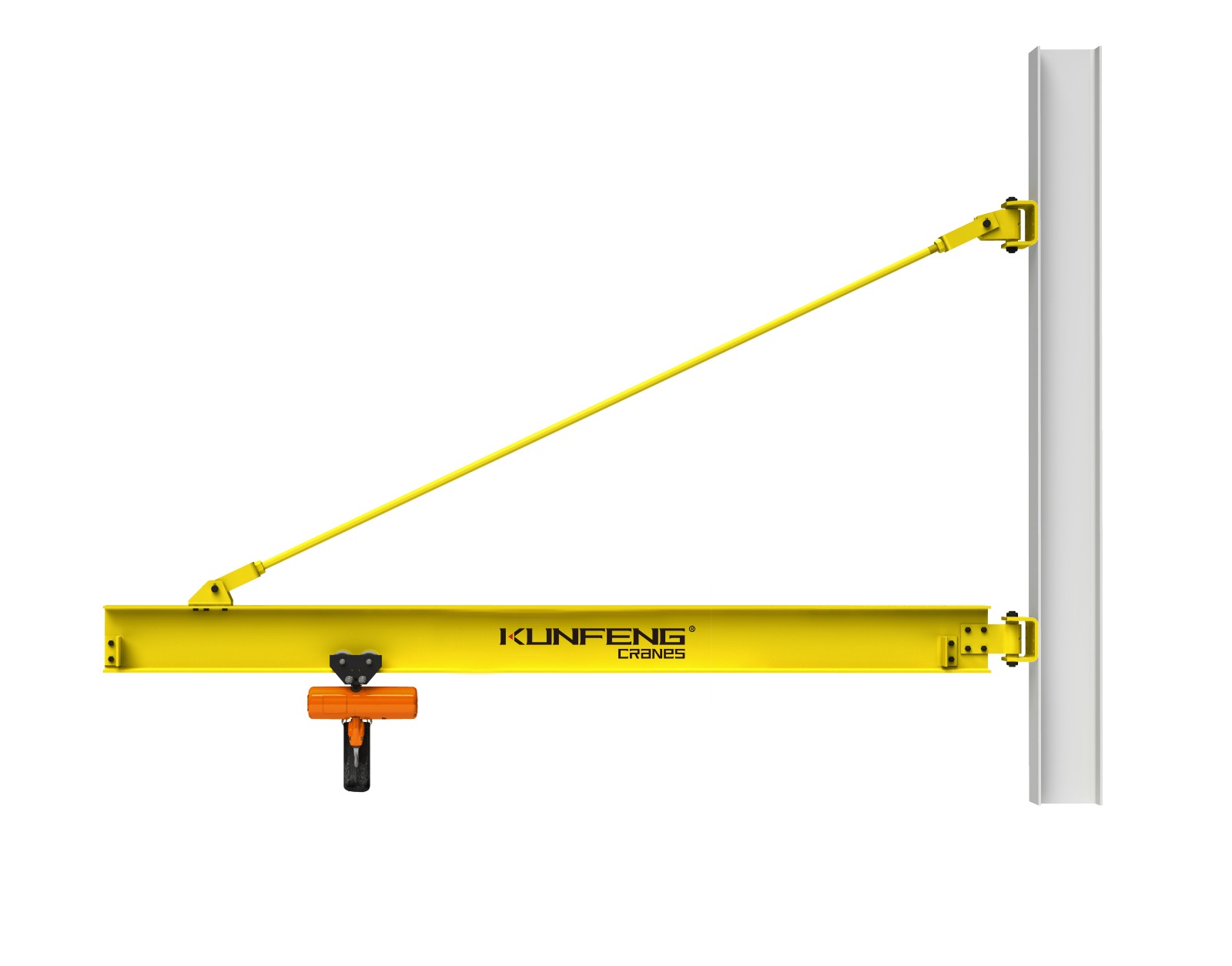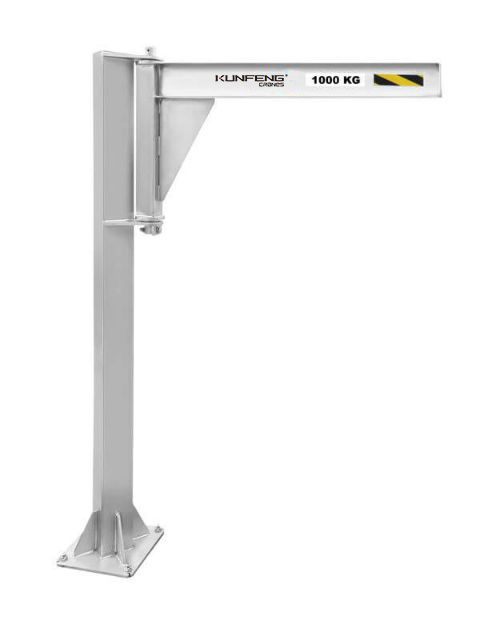Jib cranes are versatile and efficient lifting devices commonly used in industrial settings. They consist of a horizontal arm that is mounted on a vertical mast or pillar, allowing for the movement of loads within a specific area. Proper installation and maintenance of jib cranes are essential to ensure their safe and effective operation. Here is a guide for jib crane installation and use:
INSTALLATION
 • Site Preparation: Before installing a jib crane, ensure that the site is suitable and has adequate space for the crane's movement and load requirements. Clear any obstructions and ensure a stable foundation for the crane's base.
• Site Preparation: Before installing a jib crane, ensure that the site is suitable and has adequate space for the crane's movement and load requirements. Clear any obstructions and ensure a stable foundation for the crane's base.
• Structural Integrity: Verify that the structure or support where the jib crane will be installed is capable of withstanding the loads imposed by the crane and its operations. Consult relevant engineering specifications and guidelines.
• Assembly: Follow the manufacturer's instructions for assembling the jib crane components, including the jib arm, mast, base, and electrical connections. Ensure all bolts and fasteners are tightened securely.
• Electrical Connections: Engage a qualified electrician to connect the jib crane to the power supply. Ensure proper grounding and adherence to electrical safety standards.
TIPS FOR JIB CRANE USE
1. The switch button and cantilever crane hoist should be checked befor use. If they are in a problem, they must be repaired in time before it can be used. If there are any issues, they must be repaired in a timely manner before use. After use, all power switches must be turned off before leaving.
2. When lifting objects with the jib crane, the operator should concentrate their attention, keeping both hands on the control switch to brake at any time.
3. When moving any objects, it is necessary to test lift them first. The hook should be vertical, and if any imbalance is found, the hook should be adjusted in a timely manner. It is not allowed to use a slanted hook. After retesting and ensuring the stability of the object, freestanding jib cranes can be used to lift goods.
4. Overloading is strictly prohibited. Lifting goods should not exceed 500kg.
5. The jib crane should not be lifted too high from the ground when transporting objects. It should be kept at about half the height of a person. Crossing over machine tools during lifting is strictly prohibited.
 6. When lifting objects, attention should be paid to the operation status. If any abnormal noise or phenomenon occurs, lifting should be stopped immediately.
6. When lifting objects, attention should be paid to the operation status. If any abnormal noise or phenomenon occurs, lifting should be stopped immediately.
7. All impromptu repairs are strictly prohibited when using the jib crane.
8. Any jib cranes used outdoors should be covered up or stored in a clean dry environment when not in use.
In summary, proper installation and regular maintenance of jib cranes are essential for their safe and efficient operation. By following the above tips for use, conducting routine inspections, and ensuring operator training, the lifespan and performance of jib cranes can be maximized while minimizing the risk of accidents or equipment failures.
